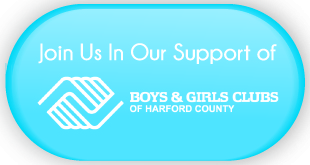Learning Tools

Evidence-based design of Architecture in healing invironment
Health care in 21st century face multiple challenges in the delivery of care. For example; unpredictable reimbursements,shortages of virtually every type of provider,expanding disclosure requirements, unprecedented quality and safety requirements, aging facilities, and skyrocketing expenses are just some of the forces influencing the provision of care.
These forces present complex challenges to health care leaders but present opportunities as well.
Evidence design of architecture, as well as exterior and interior design can profoundly impact patient outcome, employee health, and organizational productivity (Sadler,Dubose,Malone,& Zimring, 2008).
Multiple studies on the effects of health care design suggest that all hospital,clinics,and other health care facilities;clients and visitors have the following needs:
1. Physical Comfort - which includes appropriate room temperature, pleasant lightning, comfortable furniture and freedom from unpleasant odors and harsh annoying noise.
2. Social contact - a privacy that limit what other see and hear of you and controlling what you see and hear of others.
3. Symbolic meaning - the array of non verbal messages embodied in design. For instance: cramp uncomfortable waiting room suggest that clients that coming are not respected and value.
4. Wayfinding - The maze of equipment and hallways and inadvertently wandering into restricted hallways are embarrassing or even frightening.
Without these details health care facilities are places where patients are overexposed to strangers. There are two majors questions : What does the facilities say about you and your concern for patients, your workers and the environment and how are these values reflected in every aspect of care delivery.
These forces present complex challenges to health care leaders but present opportunities as well.
Evidence design of architecture, as well as exterior and interior design can profoundly impact patient outcome, employee health, and organizational productivity (Sadler,Dubose,Malone,& Zimring, 2008).
Multiple studies on the effects of health care design suggest that all hospital,clinics,and other health care facilities;clients and visitors have the following needs:
1. Physical Comfort - which includes appropriate room temperature, pleasant lightning, comfortable furniture and freedom from unpleasant odors and harsh annoying noise.
2. Social contact - a privacy that limit what other see and hear of you and controlling what you see and hear of others.
3. Symbolic meaning - the array of non verbal messages embodied in design. For instance: cramp uncomfortable waiting room suggest that clients that coming are not respected and value.
4. Wayfinding - The maze of equipment and hallways and inadvertently wandering into restricted hallways are embarrassing or even frightening.
Without these details health care facilities are places where patients are overexposed to strangers. There are two majors questions : What does the facilities say about you and your concern for patients, your workers and the environment and how are these values reflected in every aspect of care delivery.
0 Comments
Posted on 26 Aug 2019 by admin
| Name: | Remember me |
| E-mail: | (optional) |
| Smile: | |
| Captcha | |
Powered by CuteNews

2309 Bel Air Rd #304
Fallston, Maryland 21047
View Map & Location
Mailing Address:
P.O Box 415
Fallston, Maryland 21047-0415
Phone: 443-417-3517
Toll Free No: 1-877-275-5407
Fax: 410-877-3092
Knights.homehealth@gmail.com
Office Address:
15500 Indianola Dr.
Rockville, MD 20855
View Map & Location
Mailing Address:
12975 Highland Rd., Ste. #224
Highland, MD 20777-9998






